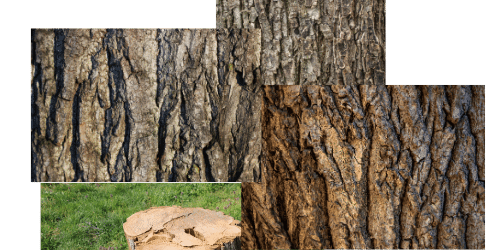Planting trees is not only beneficial for the environment but also enhances the beauty of our surroundings. However, successful tree planting requires careful planning and knowledge. In this blog post, we’ll explore common challenges faced during tree planting and provide expert advice from an ISA Certified Arborist. Whether you’re a homeowner, landscaper, or tree enthusiast, these insights will help you make informed decisions.
Understanding the intricacies of tree planting ensures healthier, long-lasting trees that contribute positively to our ecosystem.
Choosing the Right Tree Species
Climate Considerations
Different tree species thrive in specific climates. Consult local resources or an arborist to select trees suitable for your area. Choosing the right trees ensures they will grow well and remain healthy. Local experts can provide valuable insights into the best species for your climate and soil type. Proper tree selection enhances your landscape and reduces maintenance. It also supports local biodiversity. Planting trees suited to your environment promotes their longevity. This thoughtful approach benefits both your property and the local ecosystem. Consulting professionals ensures you make informed decisions.
Soil Compatibility
Conduct a soil test and choose species that tolerate your soil conditions. Different trees thrive in various soil types, such as sandy, clay, or loamy soils. Understanding your soil’s pH, texture, and nutrient content helps in selecting suitable trees. Soil testing provides crucial information for making informed decisions. Choosing trees that match your soil conditions ensures better growth and health. This approach reduces the need for extensive soil amendments. It also increases the chances of successful tree establishment. Proper tree selection based on soil type supports a thriving landscape.
Native vs. Non-Native Trees
Native trees are adapted to local conditions, making them more resilient. They thrive in the local climate and soil, and are more resistant to pests and diseases. Non-native trees may require extra care. They might not be as well-suited to your area’s conditions and may need more water, fertilizer, and protection from pests. Planting native trees supports local wildlife and biodiversity. It also reduces maintenance and resource use. Choosing native species is an environmentally friendly option. It ensures a more sustainable and successful landscape.
Proper Planting Techniques
Planting Depth
Avoid planting too deep or too shallow. The root flare (where the trunk meets the roots) should be at ground level. Planting too deep can suffocate the roots and cause rot. Planting too shallow can expose roots, making them vulnerable to damage and dehydration. Proper planting depth ensures the tree establishes well and grows strong. This technique supports healthy root development and overall tree health. Checking the root flare during planting helps achieve the correct depth. Following this guideline promotes successful tree growth and longevity.
Mulching
Apply a 2-3 inch layer of organic mulch around the base of the tree, leaving space around the trunk. Mulch helps retain soil moisture and regulate temperature. It also reduces weed growth and adds nutrients to the soil as it decomposes. However, avoid piling mulch directly against the trunk, as this can lead to rot and pest issues. Proper mulching supports tree health and growth. It creates a beneficial environment for the roots. Ensuring a gap around the trunk prevents moisture buildup and protects the tree. Mulching is an essential practice for maintaining healthy trees.
Watering
Water newly planted trees deeply and consistently. This encourages strong root development. Monitor soil moisture to prevent overwatering or drought stress. Check the soil regularly to ensure it stays moist but not waterlogged. Proper watering is crucial in the first few years after planting. It helps the tree establish a robust root system. Adjust the watering schedule based on weather conditions. Consistent care supports healthy growth and increases the tree’s chances of survival. Paying attention to soil moisture helps maintain the right balance for optimal tree health.
Post-Planting Care
Staking and Guying
Use stakes and guying systems only when necessary. These supports can help stabilize young trees. However, improper or prolonged use can hinder growth. Remove them once the tree establishes roots. Typically, this takes one to two years. Leaving stakes and guying systems on for too long can restrict trunk movement and development. Regularly check the supports to ensure they are not causing damage. Proper use of stakes and guying systems promotes healthy tree growth. Once removed, the tree can grow stronger and more resilient. This practice ensures the tree can stand on its own.
Pruning
Proper pruning encourages healthy growth. Remove broken or crossing branches. This helps the tree develop a strong structure. Pruning also improves air circulation and light penetration. Regular pruning prevents disease and pest issues. Focus on removing damaged or problematic branches. This directs the tree’s energy to healthy growth. Pruning should be done at the right time of year for each tree species. Using clean, sharp tools ensures clean cuts and reduces the risk of infection. Proper pruning practices contribute to the overall health and longevity of the tree.
Fertilization
Follow recommended fertilization schedules to promote tree health. Proper fertilization provides essential nutrients for growth. It helps trees develop strong roots, healthy leaves, and robust branches. Use the right type of fertilizer for your tree species and soil conditions. Over-fertilizing can harm trees, so adhere to guidelines. Regular soil testing can help determine nutrient needs. Applying fertilizer at the right time ensures maximum benefit. This practice supports overall tree vitality and resilience. Consistent fertilization contributes to a thriving, healthy landscape.
Ensuring Proper Tree Maintenance
Pruning Techniques
Regular pruning helps maintain tree health and shape. Remove dead, diseased, or crossing branches. This promotes air circulation and reduces the risk of disease. Following proper pruning guidelines is essential to avoid harming the tree. Use sharp, clean tools and prune during the appropriate season for your tree species. Proper cuts promote healing and prevent pest infestations. Regular pruning supports overall tree structure and longevity. It also enhances the aesthetic appeal of your landscape. Taking care to prune correctly ensures the health and vitality of your trees.
Pest and Disease Management
Monitor trees for signs of pests or diseases regularly. Look for unusual leaf discoloration, wilting, or abnormal growth patterns. Consult an arborist if you notice any issues. Arborists can diagnose problems and recommend appropriate treatments. Implement preventive measures, such as proper watering and soil care. Healthy trees are less susceptible to pests and diseases. Maintain good soil fertility and drainage to support tree health. Proper care and timely intervention help maintain the vitality and beauty of your trees.
Root Zone Protection
Protect the area around the tree’s base (root zone) to support its health. Avoid construction or heavy foot traffic near the tree. These activities can damage roots and compact the soil. Mulch the root zone to retain moisture and prevent soil compaction. Apply a 2-3 inch layer of organic mulch, leaving space around the trunk. This helps regulate soil temperature and retain moisture. Properly caring for the root zone promotes healthy root growth and overall tree vigor. Avoiding disturbances and mulching are key practices for maintaining tree health and longevity.
Common Questions Answered
Q1 How often should I water my newly planted tree?
A1 Water deeply once a week during the first year, adjusting based on weather conditions.
Q2 Can I plant a large tree close to my house?
A2 Consider the tree’s mature size and root system. Large trees should be planted away from structures.
Q3 What’s the best time to plant trees?
A3 Fall and early spring are ideal for tree planting.
The Impact of Soil Health
Healthy soil is crucial for tree survival. Soil compaction, pH levels, and nutrient availability affect tree growth. Consult an arborist for soil improvement strategies.
Soil Health and Tree Growth
Understanding soil composition and addressing deficiencies can significantly impact tree health. Soil aeration, organic matter addition, and proper drainage contribute to successful tree establishment.
Seeking Expert Advice
While this blog post provides valuable insights, consulting an ISA Certified Arborist ensures personalized guidance. Arborists assess site-specific factors and recommend tailored solutions for successful tree planting.
Conclusion
Planting trees is an act of hope—a promise to future generations. As we dig holes, cradle saplings, and nurture their growth, we become stewards of the earth. In this journey, we encounter challenges, but with knowledge and perseverance, we can overcome them.
Every tree we plant carries a legacy. It whispers stories of seasons, shelters wildlife, and breathes life into our landscapes. As we watch these silent sentinels grow, we realize that our actions ripple through time. Each tree becomes a testament to our stewardship of the Earth. It stands as a symbol of our commitment to future generations. Planting trees is an act of hope and sustainability. It connects us to nature and enriches our surroundings. Every tree holds the promise of a greener, healthier world.
Beneath the surface, roots explore the soil, seeking sustenance and anchoring the tree. Soil, like a nurturing parent, cradles these roots, providing nutrients, water, and stability. This underground partnership supports the tree’s growth and resilience. As roots spread and deepen, they strengthen the tree’s foundation. The soil’s role is vital, sustaining life unseen yet essential to our ecosystems. Together, roots and soil create a dynamic harmony, nurturing life above and below ground.
Trees endure storms—fierce winds, torrential rains, and blistering sun. Their resilience teaches us patience and reminds us that growth often happens imperceptibly. Despite adversity, trees stand strong, adapting to changing conditions over time. Their ability to weather storms reflects their inner strength and perseverance. Observing trees teaches us resilience and the importance of enduring challenges. Like trees, we learn to grow steadily, rooted in resilience and strengthened by each passing season.
Visit Us at Green Tree Co
For more information and expert guidance, visit us at Green Tree Company. We’re here to provide you with comprehensive tree care services, ensuring the well-being of your arboreal friends. Whether it’s root pruning, disease management, or urban tree solutions, our team is dedicated to preserving the natural beauty around us. Join us in our mission to protect and cherish the trees that enrich our lives!







